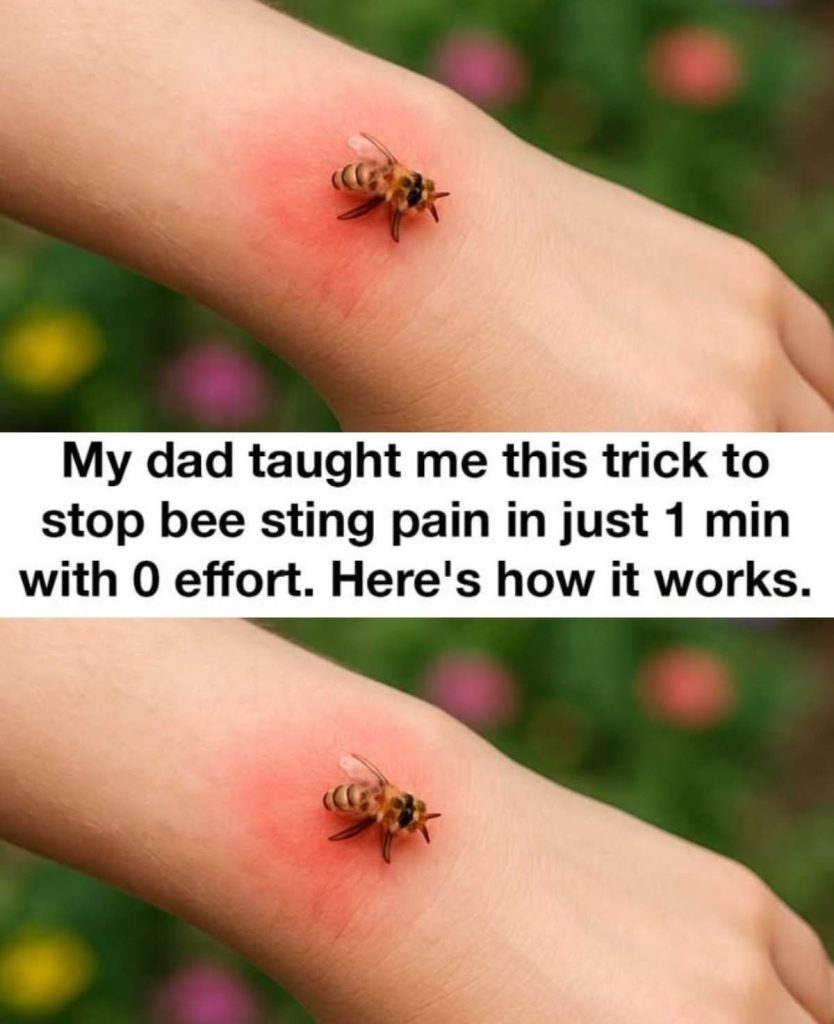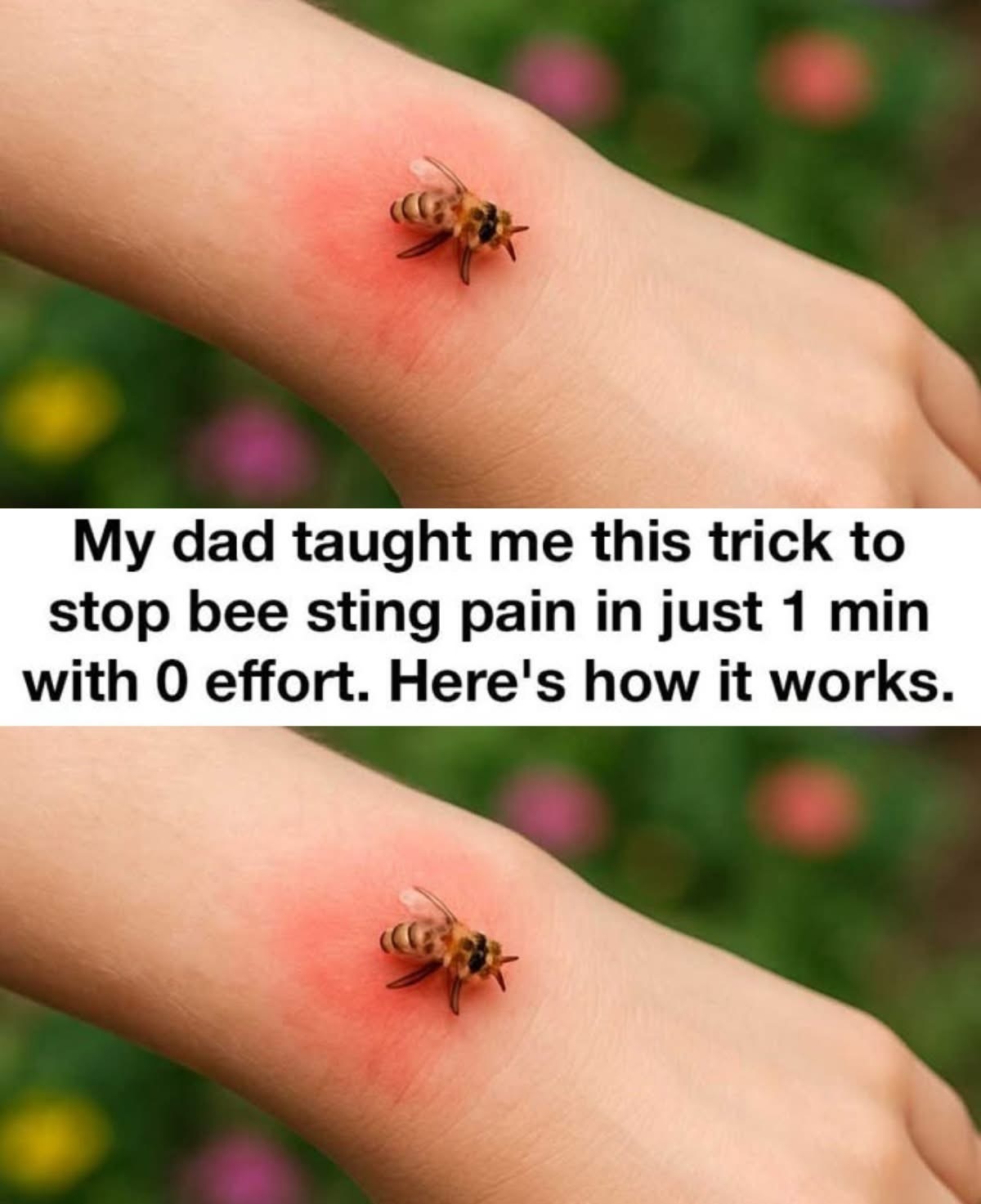
I Didn’t Know This — But My Dad’s 1-Minute Bee Sting Trick Works Like Magic
Introduction
Bee stings can be unexpectedly painful, leaving behind redness, swelling, and a burning sensation. Whether you’re gardening, hiking, or enjoying a picnic, one unfortunate encounter with a bee can quickly ruin your day. While many reach for ice packs or creams, there’s a surprisingly simple trick—passed down through generations—that can ease the pain in just one minute with almost no effort.
This method, taught by a caring father to his child, is quick, natural, and easy to remember, making it perfect for emergencies. But first, let’s understand why bee stings hurt and what happens in your skin when one occurs.
Why Bee Stings Hurt
When a bee stings, it leaves behind a venomous sac connected to a barbed stinger. This venom contains compounds like melittin and histamines that cause immediate pain, swelling, and redness. The venom sac continues to pump toxins into the skin for several seconds after the sting, which is why acting quickly is essential.
The One-Minute Trick
Here’s the method many swear by for almost instant relief:
Step 1: Remove the Stinger Quickly
- Use a credit card edge or the back of a knife to gently scrape the stinger out.
- Avoid pinching with fingers or tweezers, as this can squeeze more venom in.
Step 2: Apply a Baking Soda Paste
- Mix 1 teaspoon baking soda with a few drops of water until it forms a thick paste.
- Apply directly to the sting site.
- The alkalinity of baking soda helps neutralize the acidity of bee venom, reducing pain and swelling.
Step 3: Wait for the Relief
- Leave the paste on for at least 1–2 minutes.
- Many report a noticeable drop in pain almost instantly.
Why It Works
Bee venom is slightly acidic. Baking soda, being alkaline, counteracts this acidity, which helps reduce the burning sensation. Additionally, the cool, moist paste soothes inflammation and provides a calming effect on irritated nerve endings.
Alternative Remedies
If you don’t have baking soda, you can try:
- Ice pack – Numbs the nerves and reduces swelling.
- Honey – Surprisingly, honey contains natural anti-inflammatory and antibacterial properties.
- Toothpaste – Mildly alkaline and can give temporary relief.
- Vinegar – Works better for wasp stings (which are alkaline), not bee stings.
Precautions
- Watch for allergic reactions such as swelling of the face or throat, difficulty breathing, or dizziness. Seek medical help immediately if these occur.
- If stung multiple times or by a swarm, seek urgent medical care.
A
How to Prevent Bee Stings
- Wear light-colored clothing outdoors.
- Avoid sweet perfumes or scented lotions.
- Cover food and drinks when outside.
- Stay calm and move away slowly if a bee is near.
Benefits of This Method
- Fast — Works in under a minute for many people.
- Simple — Requires only common household items.
- Natural — No synthetic chemicals needed.
- Cost-effective — Practically free.
Conclusion
Bee stings are painful but don’t have to ruin your day. With this quick one-minute trick, you can neutralize the venom, calm the skin, and get back to enjoying your time outdoors. Whether you choose baking soda paste or another natural remedy, acting fast is key to minimizing discomfort. Just remember—if you experience any signs of an allergic reaction, seek medical attention immediately.
